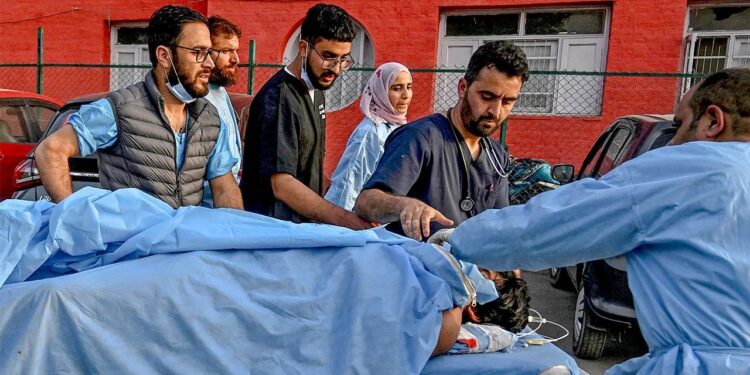Tensions between India and Pakistan have escalated sharply following a series of military actions and retaliations in early May 2025. The situation has drawn international concern due to the nuclear capabilities of both nations and their fraught history.
Latest developments: Operation Sindoor and retaliation
On 7 May 2025, India launched “Operation Sindoor,” targeting nine sites in Pakistan and Pakistan-administered Kashmir. These strikes were in response to a terrorist attack on 22 April in Pahalgam, Indian-administered Kashmir, which resulted in the deaths of 26 civilians. India claimed the targets were infrastructure linked to militant groups such as Lashkar-e-Taiba and Jaish-e-Mohammed, asserting that the operation was focused, measured, and non-escalatory. Read more
Pakistan condemned the strikes as an unprovoked act of war, reporting civilian casualties and asserting that it had shot down five Indian fighter jets. Read more In retaliation, Pakistan conducted airstrikes on an Indian security post and appealed to the United Nations Security Council for intervention. Read more
The international community, including the United Nations and the United States, has called for restraint and dialogue to prevent further escalation. Read more
Historical context: a legacy of conflict
The roots of the India–Pakistan conflict trace back to the partition of British India in 1947, leading to the creation of two separate nations. The princely state of Jammu and Kashmir became a contentious issue, with both countries claiming it in full but controlling parts of it.
Key conflicts include:
- 1947–1948: The first Indo-Pakistani war over Kashmir ended with a UN-mediated ceasefire, establishing the Line of Control but leaving the region divided.
- 1965: The second war, initiated by Pakistan’s Operation Gibraltar, aimed to infiltrate forces into Indian-administered Kashmir, leading to widespread hostilities.
- 1971: The third war resulted in the independence of East Pakistan as Bangladesh, following India’s intervention in support of the Bengali liberation movement.
- 1999: The Kargil conflict saw Pakistani soldiers and militants occupying strategic positions on the Indian side of the Line of Control, leading to a limited war.
- 2019: Following a suicide bombing in Pulwama, India conducted airstrikes in Balakot, Pakistan, marking a significant escalation in hostilities.
These conflicts have perpetuated a cycle of mistrust and military preparedness between the two nations.
Future outlook: risks and diplomatic avenues
The current escalation raises concerns about the potential for a broader conflict, especially given both countries’ nuclear arsenals. Experts warn that miscalculations or further provocations could lead to a catastrophic confrontation. Read more
However, historical patterns suggest that international diplomatic efforts often play a crucial role in de-escalating tensions. Engagements by global powers and multilateral organisations may help facilitate dialogue and prevent further deterioration of the situation.
The enduring dispute over Kashmir remains at the heart of the conflict. A sustainable resolution would require addressing the aspirations of the Kashmiri people, ensuring regional security, and fostering mutual trust between India and Pakistan.
newshub finance



Recent Comments